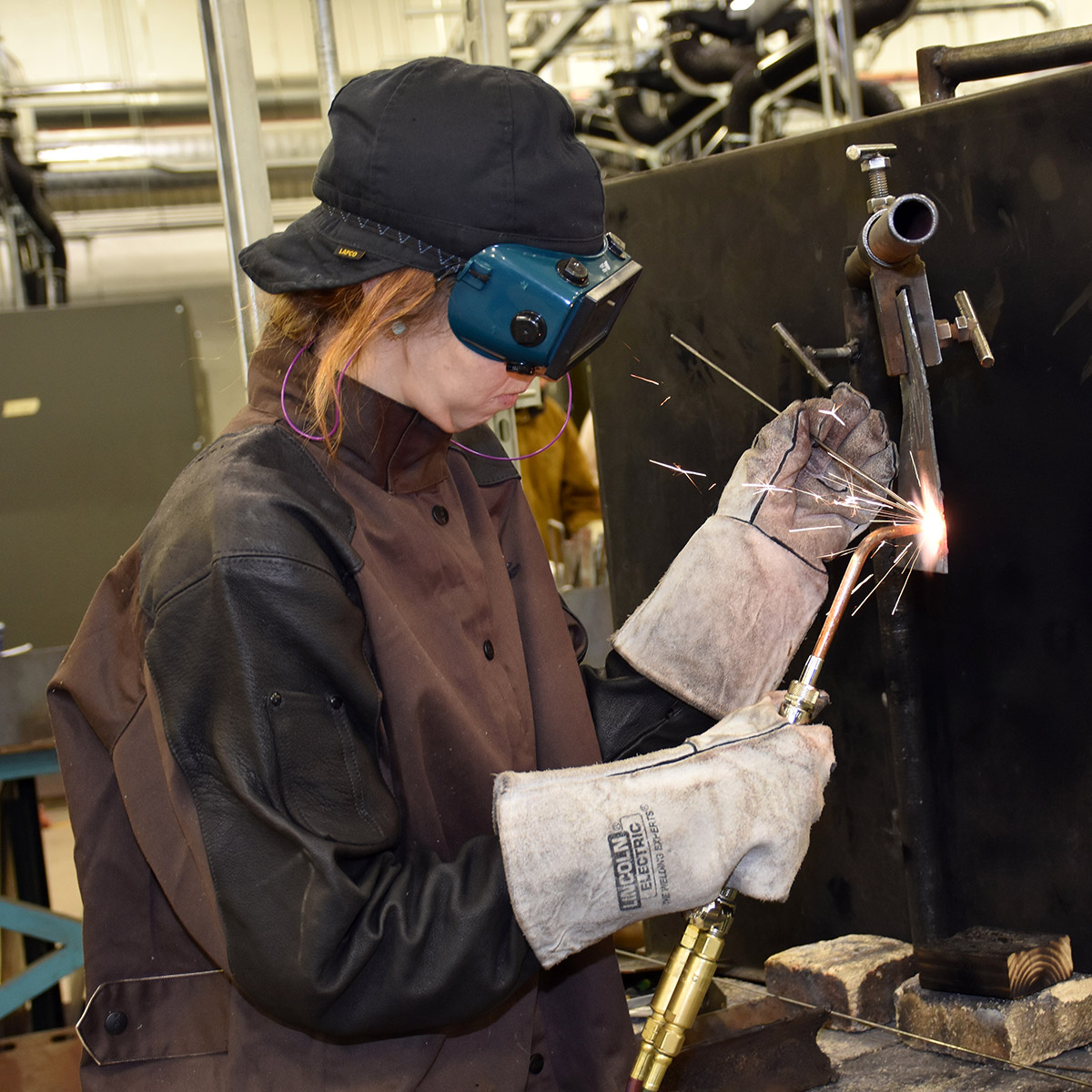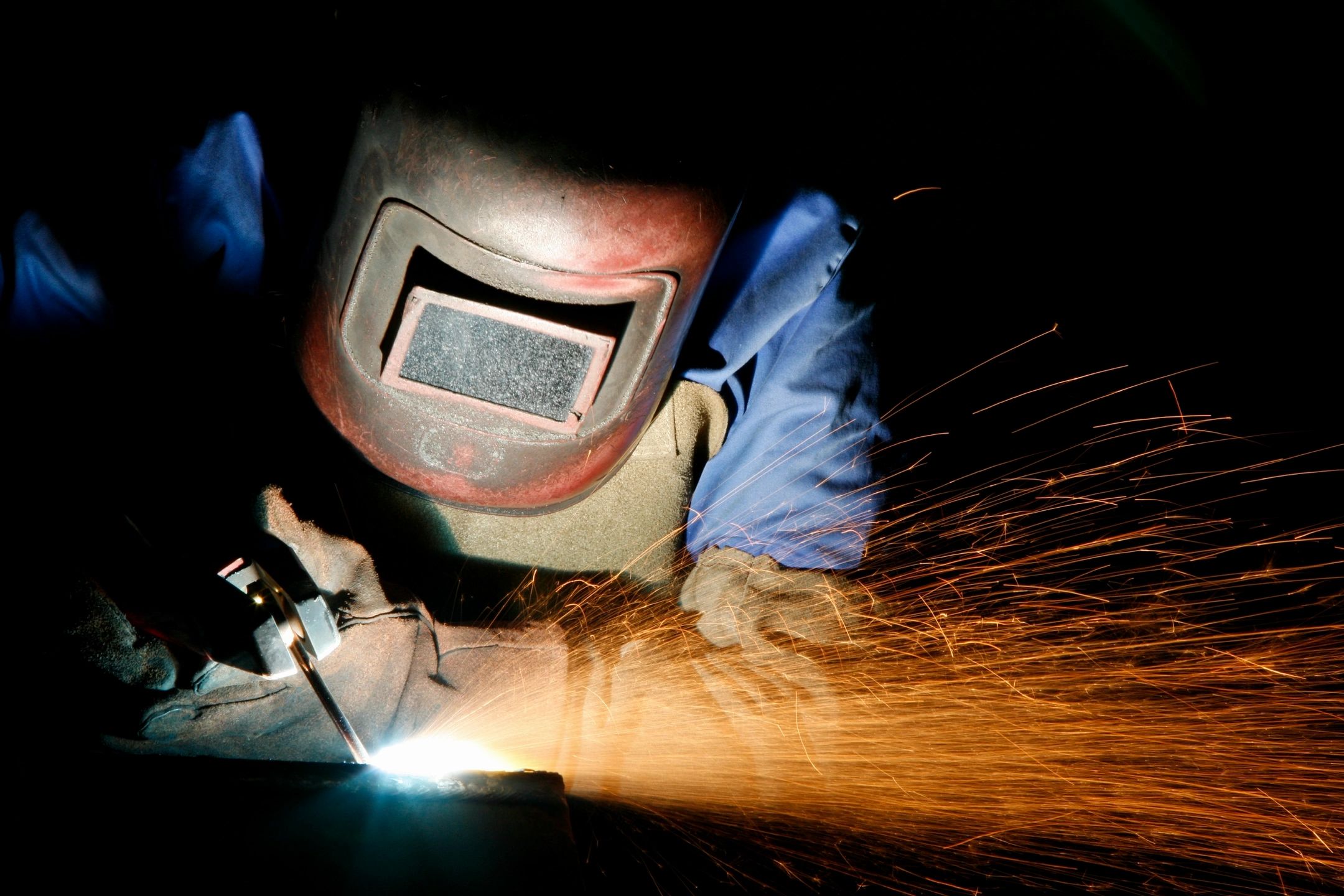All Regarding Welding: Secret Insights Into Techniques and Ideal Practices for Success
Welding incorporates a variety of methods, each matched for specific products and applications. Comprehending these approaches, such as GMAW, SMAW, and TIG, is vital for attaining ideal results. Moreover, the best tools and safety and security practices can not be ignored. As prep work and repairing play crucial duties in the welding process, mastering these elements can substantially boost the quality of the final product. What are the key factors that ensure a successful weld?
Understanding Various Welding Techniques
Welding methods encompass a range of approaches, each suited to particular applications and products. Amongst one of the most common strategies are Gas Metal Arc Welding (GMAW), Secured Steel Arc Welding (SMAW), and Tungsten Inert Gas Welding (TIG) GMAW, also understood as MIG welding, is popular for its speed and versatility, making it ideal for thin products. SMAW, or stick welding, is favored for its simpleness and efficiency in exterior environments, particularly with thicker steels. TIG welding offers accuracy and control, making it ideal for elaborate job and non-ferrous metals (Montana Mobile Welding and Repair Belgrade Welding). Each strategy has its special benefits and factors to consider, allowing welders to select the very best method based on the task's demands, product kind, and wanted results. Understanding these strategies is necessary for successful welding
Necessary Welding Equipment and Tools
While various welding strategies need details skills, the best equipment and tools are similarly necessary for attaining top quality results. Essential welding devices consists of welding makers, which differ depending upon the technique-- such as MIG, TIG, or stick welding. Protective gear, including aprons, gloves, and safety helmets, guarantees security and comfort during the procedure. Additionally, clamps and components aid secure products in area, guaranteeing precision in welds. Consumables like welding rods, cable, and shielding gas are additionally crucial components that affect the top quality of the weld. Furthermore, tools such as grinders and cutters help with surface prep work and post-weld finishing, adding to a specialist result. Buying top quality devices eventually improves the effectiveness and efficiency of welding jobs.
Safety Practices in Welding
Correct security techniques are necessary in the welding industry to protect employees from potential dangers. Welders need to wear suitable individual safety tools (PPE), including helmets with appropriate shading, handwear covers, and flame-resistant clothing. Adequate air flow is crucial to decrease exposure to damaging fumes and gases produced during the welding procedure. In addition, workers should be learnt the appropriate handling of welding equipment to avoid mishaps. Fire safety actions, such as keeping flammable products far from the welding area and having fire extinguishers conveniently offered, are essential. Normal evaluations of equipment and work spaces can assist recognize prospective hazards prior to they lead to accidents. By adhering to these security techniques, welders can produce a safer working atmosphere and decrease risks connected with their trade.
Readying Products for Welding
Preparing materials for welding is a vital step that considerably affects the top quality and stability of the end product (Montana Mobile Welding and Repair Fabrication). Correct prep work entails cleansing the surface areas to remove impurities such as dirt, oil, and rust, which can compromise the weld. Methods such as grinding, fining sand, or making use of solvents are generally used to accomplish a tidy surface area. In addition, making certain that the products fit together well is vital; spaces can lead to weak welds. It's also essential to take into consideration the alignment and positioning of the components, as this will influence the simplicity of welding and the final outcome. Choosing the appropriate filler product and ensuring compatibility with the base steels is important for achieving solid, sturdy welds.
Tips for Achieving High-Quality Welds
Attaining high-grade welds requires interest to detail and adherence to ideal methods throughout the welding process. Appropriate joint prep work is important, ensuring surfaces are clean and totally free from pollutants. Choosing the appropriate filler material and welding strategy based on the base metals is crucial for excellent bonding. Preserving constant traveling speed and angle while welding can protect against problems and promote harmony. Additionally, managing warmth input is vital; extreme warmth can bring about warping and weakened joints. Routinely evaluating the welds during the process enables prompt adjustments if needed. Finally, employing suitable post-weld therapies, such as cleansing and stress relief, can enhance the longevity and stability of the weld, inevitably ensuring an effective end result.
Troubleshooting Usual Welding Issues
Welding typically provides challenges that can affect the top quality and integrity of the final item. Typical problems such as porosity, inconsistent weld grains, and getting too hot can develop, each requiring specific fixing methods. Understanding these troubles is crucial for welders to improve their skills and attain excellent outcomes.
Porosity Problems Explained
Porosity can often be neglected, it stays a vital concern in welding that can compromise the honesty of a finished item. Porosity refers to the existence of small gas pockets within useful source the weld grain, which can damage the joint and lead to early failure. This problem generally occurs from impurities, dampness, or inappropriate shielding gas protection throughout the welding process. To reduce porosity, welders ought to validate that the base materials are tidy and dry, utilize suitable protecting gases, and preserve constant welding parameters. On a regular basis evaluating the tools and setting can also aid recognize prospective issues before they materialize in the weld. Dealing with porosity efficiently is vital for attaining solid, resilient welds that satisfy quality criteria.

Inconsistent Weld Beads
Inconsistent weld beads can greatly influence the high quality and stamina of an ended up product. Different elements add to this issue, consisting of incorrect travel rate, wrong amperage settings, and irregular electrode angles. When the welder moves as well rapidly, a grain may show up narrow and do not have infiltration, while moving as well gradually can trigger too much accumulation. Furthermore, making use of the wrong amperage can lead to either undercutting or excessive spatter, both of which concession weld stability. The welder's method, such as inconsistent lantern movement, can additionally cause unequal bead look. To reduce these troubles, welders ought to concentrate on maintaining consistent, controlled activities and making sure proper equipment settings to accomplish uniformity in their welds. Consistency is crucial to attaining reliable and strong welds.
Overheating and Bending Issues
Excessive heat during the welding procedure can result in considerable overheating and warping problems, impacting the structural stability of the work surface. These issues typically materialize as distortion, which can endanger alignment and fit-up, making further setting up testing. Factors adding to overheating consist of the selection of welding parameters, such as voltage and travel speed, as well as the type of product being bonded. To reduce these issues, welders need to preserve regular travel rate and suitable heat input while keeping an eye on the work surface temperature. Furthermore, preheating or post-weld heat therapy can help ease tensions brought on by rapid air conditioning - Belgrade Welding. Normal examination and adherence to ideal methods are necessary in protecting against overheating and making sure the durability and dependability of welded structures
Frequently Asked Concerns
What Are the Profession Opportunities in the Welding Industry?
The welding industry uses diverse occupation possibilities, including placements as welders, educators, assessors, and engineers. Experts can function in production, construction, aerospace, and auto markets, profiting from solid need and affordable incomes in various duties.
Just How Can I Improve My Welding Rate Without Sacrificing High Quality?
To improve welding speed without sacrificing top quality, one should exercise effective strategies, maintain devices, maximize setups, and improve hand-eye sychronisation. Regular training and seeking responses can also considerably add to accomplishing quicker, high-grade welds.
What Accreditations Are Offered for Welders?
Numerous qualifications exist for welders, including those from the American Welding Society (AWS), the National Facility for Building And Construction Education And Learning and Research (NCCER), and various industry-specific companies. These credentials enhance employability and show ability efficiency.
Just How Does Welding Influence the Features of Metals?
Welding affects the homes of steels by altering their microstructure, which can bring about modifications in ductility, solidity, and toughness. Warmth input and cooling prices during the procedure greatly impact these material features.
Can I Weld Dissimilar Metals With Each Other?
